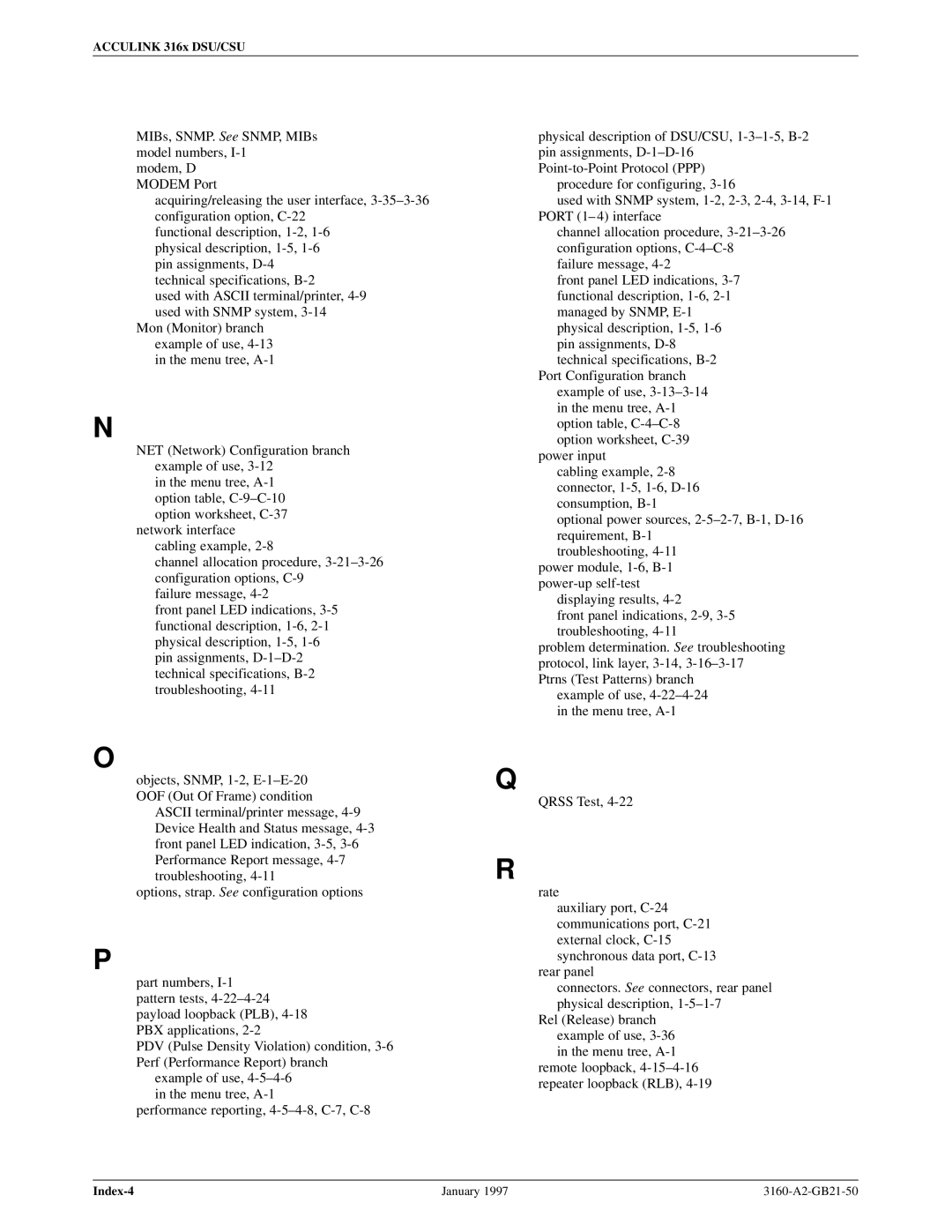
ACCULINK 316x DSU/CSU
MIBs, SNMP. See SNMP, MIBs model numbers,
modem, D MODEM Port
acquiring/releasing the user interface,
functional description,
used with ASCII terminal/printer,
Mon (Monitor) branch example of use,
N
NET (Network) Configuration branch example of use,
in the menu tree,
network interface cabling example,
channel allocation procedure,
failure message,
front panel LED indications,
O
objects, SNMP,
ASCII terminal/printer message,
options, strap. See configuration options
P
part numbers,
PDV (Pulse Density Violation) condition,
example of use,
performance reporting,
physical description of DSU/CSU,
used with SNMP system,
channel allocation procedure,
front panel LED indications,
Port Configuration branch example of use,
power input
cabling example,
optional power sources,
troubleshooting,
displaying results,
front panel indications,
problem determination. See troubleshooting protocol, link layer,
example of use,
Q
QRSS Test,
R
rate
auxiliary port,
rear panel
connectors. See connectors, rear panel physical description,
Rel (Release) branch example of use,
remote loopback,
| January 1997 |
|
